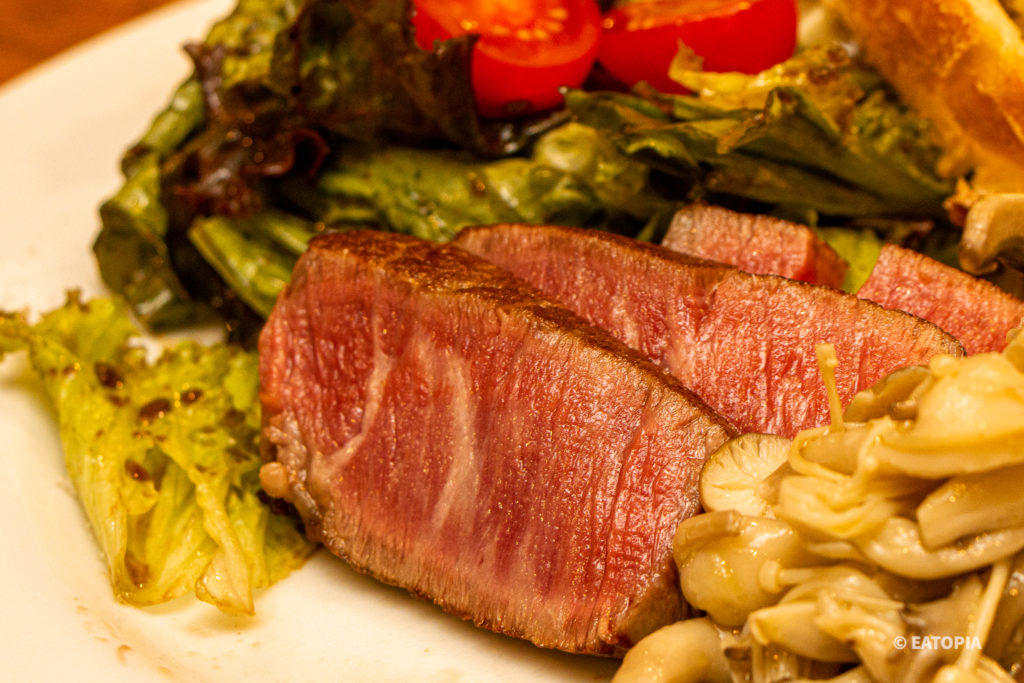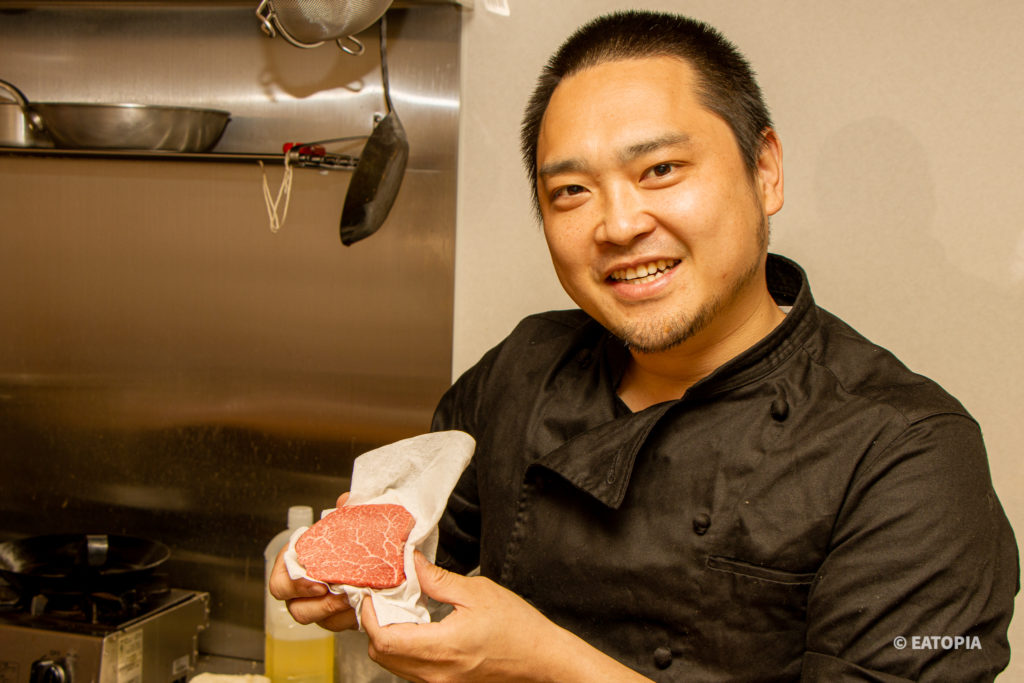"Torikai Livestock Industry."
What is Tottori Wagyu beef?

The certification standard for Tottori wagyu beef is “Japanese black cattle raised in Tottori Prefecture with grade 3 or higher meat quality”.
In 1920, Tottori Prefecture started registering the first Wagyu beef in Japan (Japanese beef family register management). It gained a reputation as an “Inpaku beef” all over Japan, and supplied many stud bulls to new production areas such as Kyushu and Tohoku in the early Showa period (1926~). In the first All-Japan Wagyu Ability Promotion Society held in 1966, “気高号(Ketaka-go)” owned by Tottori Prefectural Livestock Experiment Station, won first prize. This breed became the basis for improving Japanese beef throughout the country and eventually earned its name as the originator of brand beef produced in each prefecture.
High-quality meat "Olein 55".

The bloodline of “気高号(Ketaka-go)” was found to be good fat by nature, and beef with a 55% or more oleic acid in the fat of the loin core is now recognized as a [Tottori Wagyu Olein 55] brand.
Oleic acid is a type of “unsaturated fatty acid” found in a lot of olive oil and camellia oil. It’s vegetable oil and said to suppress bad cholesterol. Tottori Wagyu Olein 55 produces only about 20% of the total shipment and is distributed as very rare meat.
Tottori wagyu’s fat is rich in discordant fatty acids, which dissolve even at low temperatures, and in particular is rich in oleic acid, which is said to be as healthy as olive oil.
The deliciousness of Tottori Wagyu comes from its tradition as a wagyu producing area, its climate blessed with high-quality water, and its producers’ skills.
History of Tottori Wagyu beef

The number of Japanese beef cattle raised in Tottori Prefecture is only less than 1% nationwide, and it is by no means large. On the other hand, Tottori Prefecture is known as the production center of Japanese beef since the Edo period.
One of the reasons for this is that abundant iron sand has been produced in the Chugoku Mountains for a long time. Therefore, bellows iron manufacturing using this as a raw material has been actively carried out, and cattle have been required for transportation.
Furthermore, Mt. Oyama, one of the most famous sacred mountains in western Japan, has been worshipped by people since ancient times as a sacred mountain. It is said that it became common for worshippers to visit Daisen-ji Temple with horses and cattle. In the Heian period, Priest Motoko chanted, “Jizo-Bosatsu in Daisen-ji Temple is a Buddhist image for guarding horses and cattle.” and put an amulet tag on it. After worshipers began to compare and exchange horses and cattle, the city prospered during the Edo period as one of Japan’s three major cities along with the city of Kui in Hiroshima Prefecture and the city of Shirakawa in Fukushima Prefecture.
At the end of the Meiji period, foreign breeds were encouraged, and breeding with Japanese beef was promoted. In 1920, we started the Japanese beef registration business ahead of the rest of the country and began full-scale breeding and improvement based on pedigree registration and improvement targets. After that, Oyama Ushima City will close in the spring of 1937 due to the development of railways and other factors, but the registered project was used extensively for the breeding of Japanese beef and became the foundation for the birth of Japanese beef, which is now attracting the world’s attention.